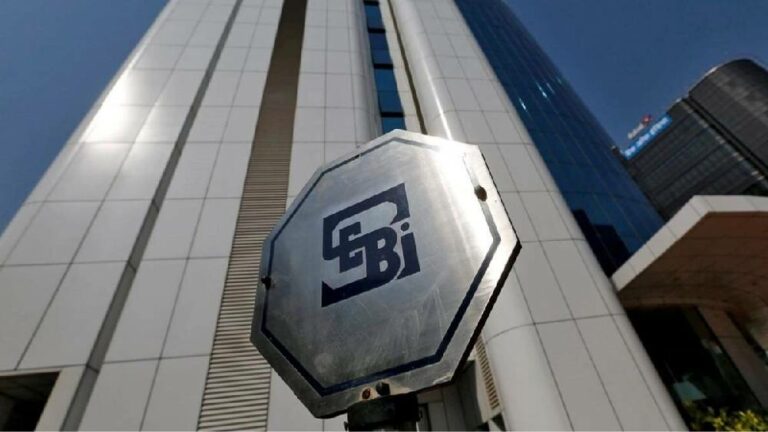Sebi, though always acts late, has been consistently prioritized empowering investors and promoting fair practices in the securities market. Its latest and significant initiatives is the Application Supported by Blocked Amount (ASBA) facility for secondary market trading. ASBA is a payment mechanism that allows investors to block their funds in their savings accounts instead of transferring the money to the broker’s account during IPO subscriptions. This ensures the safety of investor funds and streamlines the process of applying for shares in an IPO, with a reduction in the time taken for refunds and providing greater liquidity to investors.
Now the ASBA facility can also be applied to secondary market trading, which could result in a real-time settlement process. This method allows investors to block their funds in their accounts while placing an order. Once the order is executed, the funds will remain blocked until the shares are credited to the demat account.
The capital markets regulator, the Securities Exchange Board of India (SEBI), in the last week of March 2023, approved a framework for an Application Supported by Blocked Amount (ASBA)-like facility for trading in the secondary market. The action is seemingly targeted at refining translucency and protection to client funds lying with the stockbrokers. The facility will be discretionary for investors and brokers. The framework will be executed in a phased fashion, to enable a smooth transition in the capital market.
An ASBA is an approval utilized to block the application money in the bank account through Unified Payments Interface (UPI). Usually, it is used for subscribing to an initial public offering (IPO). Under the present custom, an investor wanting to buy stocks will transfer funds to the stockbroker, which is kept in a pool of clients’ money accounts. The broker then transfers the needed sum from the client’s money to the Clearing Corporation (CC) when a purchase order is positioned. With the recommended outline, the SEBI is aiming to create a direct settlement with the CC through an ASBA facility. Thus, once executed in the secondary market, an investor can use ASBA to generate a lien directly in favour of CC rather than transmitting the funds through the stockbroker.
A Sweet Pill for Investors
ASBA in secondary market trading will assure that clients will continue to earn interest on the blocked funds in their savings account till the funds get debited. There will be a direct settlement with CC without passing through the pool accounts of the intermediaries. Hence, it will provide client-level settlement visibility to CC and help avoid the risk of co-mingling clients’ funds and securities. It will eradicate the custody risk of client collateral, which is presently retained by the members, and is not transferred to the CC. There will be trouble-free and instant unblocking of the client’s funds and/ or return of securities in case of member default. The facility will bring efficiency to the secondary market ecosystem by allowing usage of the same blocked amount towards margin and settlement obligations. Thus, for investors, this will mean greater control and visibility over their money.
Margin refers to the amount of money or securities that an investor needs to deposit with their broker to buy or sell securities on margin. It is the initial payment made to the broker for the asset—for instance, 10% down and 90% financed. It will result in lower working capital requirements for members. Settlement obligations refer to the process of delivering securities and making payment for them in a securities transaction.
A Bitter Pill for Stock Brokers
Stock brokers in India are a clever lot. Fling any regulation at them, they will discover a workaround, as the SEBI and the stock exchanges have learned over the years. And not just that, there have been examples when brokers have been able to profit from some of the rules and regulations. But the recent proposal, the ASBA-like facility, creates the most serious challenge to the business model of stock broking firms.
The capital market regulator’s decision will disturb brokers as it would decrease the float funds or the client’s funds in the pool account which bears income for the broker. It could be in the shape of interest on the funds resting in the bank account, fixed deposits, bank guarantee arrangements based on the customer’s funds, etc. All that income will go away and could hit the brokers. Nevertheless, the ASBA-like facility appears to be voluntary for investors and stockbrokers for now, and its complete influence on the broking industry can be determined only when the SEBI comes out with a final circular.
The move is probably to have a greater effect on discount brokers since ‘float income’ accounts for a significant fragment of their entire income as compared to conventional or full-service brokers, who have diversified income sources. Moreover, the majority of brokerages will provide the ASBA-like service in the secondary market so long as there is a facility to collect fees from CC and potentially lesser regulatory pressure owing to the non-handling of client funds. But the funds resting in the customer’s bank for trades would mean higher risk for brokers and a hit on their float income, which would be subsidizing the charges today. Therefore, the industry will end up charging higher fees for all transactions coming through the UPI block route to make up for it. It is possible then that discount brokers may jack up their flat brokerage fee from ₹20 per trade to around ₹40 to ₹50 per trade.
Trading volumes on the stock market are likely to contract. Proprietary trading by market intermediaries, on their books, accounts for 27% of cash market volumes and around 50% of equity derivative volumes. These volumes could contract to go ahead, as the funds handled by brokers reduces.
Praiseworthy Move, But……
We have come a long way since the pre-1990 epoch when the method in which investor funds were managed for stock market trades was masked in mystery. With trading, clearing, and settlement shifting online, investors now have a reasonably good conception of where their funds are going and how they are being employed. However, there are forever governing gaps and dodges waiting to be unearthed by those looking for them.
The limelight turned on these breaches in November 2019 when the Karvy Stock Broking scandal burst out. The nebulous manner in which the assets of distinct clients and the brokerage’s funds were being held and managed came to the fore in this fraud. The broking firm had mishandled the Power of Attorney given by clients to pledge securities held on their behalf to raise money. A flood of circulars and instructions from the SEBI followed this scam, tautening the regulations for handling client assets.
The launch of an ASBA-like arrangement in the secondary market needs to be observed against this backdrop. While rules and regulations in India have kept velocity with other markets in most characteristics, the regulations on safeguarding client assets fall short of international benchmarks. It is good that the regulator is taking steps to address this now.
Nonetheless, the mechanics are much more multifaceted for secondary market trades. An IPO is a constant process with only one security involved, only one agency managing allotment, and so on. Reconciling IPO accounts is not tough and tricky. Secondary-market functions involve far more stakeholders and far more instruments, including equities, derivatives, and forex and commodity futures, each with distinct prices and different margins. A trade may be placed concurrently on both exchanges and may be configured in numerous ways, and the value of the asset will vary within seconds. There are enormous volumes of such extremely vibrant trades.
The secondary ASBA mechanism would have to be well-designed and stress-tested to preclude slowdowns and hindrances in practice. If it can be made to work, this would lessen the worries about the misuse of investor funds.
Brokers, hard-pressed for funds may be unable to provide facility for leveraged trading to clients, impacting volumes further. It could be the way forward, but the outcomes should be thought through, and implementation is done in a non-disruptive manner.























